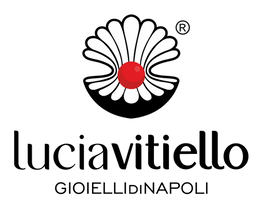anello corallo ·
bracciale corallo ·
ciondolo corallo ·
collane corallo ·
corallo ·
corallo bianco ·
corallo nero ·
corallo rosa ·
corallo rosso ·
corno di corallo ·
orecchini corallo ·
pulire il corallo ·
valutazione corallo ·
1 comment
·
Coral processing
Coral is not a mineral, but an organic substance composed of the calcareous skeleton of thousands of baby octopuses that live in colony in warm waters from fifty to two hundred meters deep. Along the Mediterranean coast, the best coral has been fished for centuries. Its color is red in various shades, salmon pink and white. The chemical composition of Coral is calcium carbonate + magnesium + organic substances. The most precious colors are the dark red, called dark red, and the pale pink nicknamed angel skin.
Corallo is worked almost exclusively in Torre del Greco, both by tradition and by culture:
- The fishermen who, since the sixteenth century, went to the coast of Corsica and Sardinia to fish for the precious stone that would later become the constitutive symbol of the Company and symbol of noble jewels of the Bourbons;
- From the early nineteenth century to the present day, Torre del Greco has linked its name to the precious gem, its workmanship and its flourishing exportation to the point of being called " Sponge d'Oro del Regno di Napoli "by King Ferdinand IV of Bourbon.
The production chain certainly starts from washing the Coral to eliminate the placton that covers the Coral, to a more detailed view of color, quality and size. In reality, the craftsman does not choose the rough pieces based on the processing he wants to carry out, but most of the time he has to carry out a specific processing based on the Coral that he has in front of him. Then we move on to a first selection of the corals that will be cut, through a particular processing of a machine with lamerino and water both to produce spheres, or cabochons and something also to engrave.
After that we proceed with the rounding, always manually, with a machine called grindstone, always with water, and based on the skill and wisdom of the craftsmen they will be smoothed and then rounded giving it the desired shape.
For some types of production, these need to be punched, through hole or half hole. In the past this phase was carried out with an arc-shaped instrument with a steel tip, but today this instrument gives way to semi-automatic machines that allow us to save time and with superior quality.
After this transformation of the product comes the polishing, which takes place in latex or rubber barrels, which with the acquisition of pumice and turned 24-36 hours, the product comes out polished.
After the selection of the finished product both for quality and for colors, we will go to insert the Coral for both necklaces or cabochons to mount earrings or rings. Keep in mind that nothing is thrown away from Coral, even the fringes are used to make Coral necklaces, bracelets or pendants.
As regards the engravings, the craftsman rounds the raw price of Coral giving a rounded shape to the piece, then moves on to putting the piece of Coral in pitch on wooden sticks (fused) with hot mastic, which will allow the craftsman to easily manipulate the piece. He then begins to engrave coral thanks to the use of precision tools, such as jokers or electric motors, giving space to his own imagination, guided and inspired by the coral branch itself. Then we move on to the purification and cleaning phase like smooth coral which will give the same product its shine.
Corallo is worked almost exclusively in Torre del Greco, both by tradition and by culture:
- The fishermen who, since the sixteenth century, went to the coast of Corsica and Sardinia to fish for the precious stone that would later become the constitutive symbol of the Company and symbol of noble jewels of the Bourbons;
- From the early nineteenth century to the present day, Torre del Greco has linked its name to the precious gem, its workmanship and its flourishing exportation to the point of being called " Sponge d'Oro del Regno di Napoli "by King Ferdinand IV of Bourbon.
The production chain certainly starts from washing the Coral to eliminate the placton that covers the Coral, to a more detailed view of color, quality and size. In reality, the craftsman does not choose the rough pieces based on the processing he wants to carry out, but most of the time he has to carry out a specific processing based on the Coral that he has in front of him. Then we move on to a first selection of the corals that will be cut, through a particular processing of a machine with lamerino and water both to produce spheres, or cabochons and something also to engrave.
After that we proceed with the rounding, always manually, with a machine called grindstone, always with water, and based on the skill and wisdom of the craftsmen they will be smoothed and then rounded giving it the desired shape.
For some types of production, these need to be punched, through hole or half hole. In the past this phase was carried out with an arc-shaped instrument with a steel tip, but today this instrument gives way to semi-automatic machines that allow us to save time and with superior quality.
After this transformation of the product comes the polishing, which takes place in latex or rubber barrels, which with the acquisition of pumice and turned 24-36 hours, the product comes out polished.
After the selection of the finished product both for quality and for colors, we will go to insert the Coral for both necklaces or cabochons to mount earrings or rings. Keep in mind that nothing is thrown away from Coral, even the fringes are used to make Coral necklaces, bracelets or pendants.
As regards the engravings, the craftsman rounds the raw price of Coral giving a rounded shape to the piece, then moves on to putting the piece of Coral in pitch on wooden sticks (fused) with hot mastic, which will allow the craftsman to easily manipulate the piece. He then begins to engrave coral thanks to the use of precision tools, such as jokers or electric motors, giving space to his own imagination, guided and inspired by the coral branch itself. Then we move on to the purification and cleaning phase like smooth coral which will give the same product its shine.


Posso gentilmente sapere se 1 volta che dal corallo si ottiene 1 collana ..nel tempo il corallo MUORE?…
Leave a comment